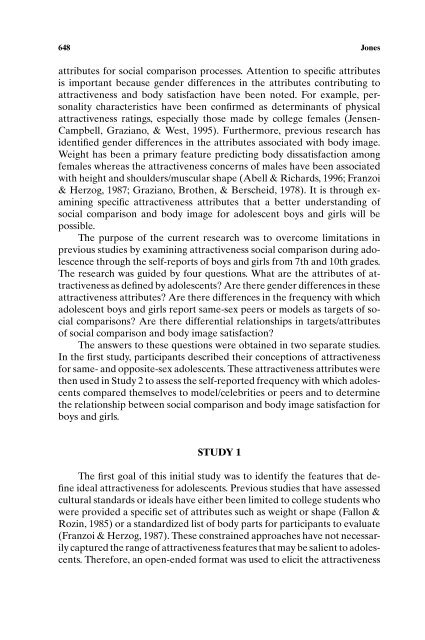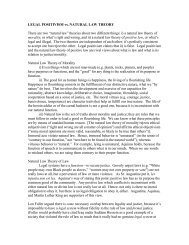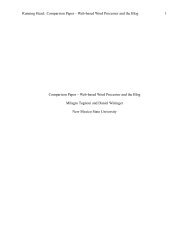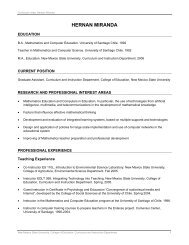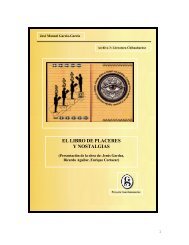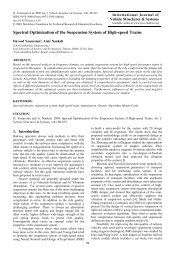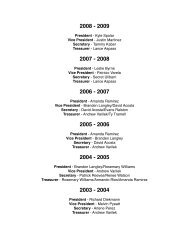Social Comparison and Body Image: Attractiveness Comparisons to ...
Social Comparison and Body Image: Attractiveness Comparisons to ...
Social Comparison and Body Image: Attractiveness Comparisons to ...
Create successful ePaper yourself
Turn your PDF publications into a flip-book with our unique Google optimized e-Paper software.
648 Jones<br />
attributes for social comparison processes. Attention <strong>to</strong> specific attributes<br />
is important because gender differences in the attributes contributing <strong>to</strong><br />
attractiveness <strong>and</strong> body satisfaction have been noted. For example, personality<br />
characteristics have been confirmed as determinants of physical<br />
attractiveness ratings, especially those made by college females (Jensen-<br />
Campbell, Graziano, & West, 1995). Furthermore, previous research has<br />
identified gender differences in the attributes associated with body image.<br />
Weight has been a primary feature predicting body dissatisfaction among<br />
females whereas the attractiveness concerns of males have been associated<br />
with height <strong>and</strong> shoulders/muscular shape (Abell & Richards, 1996; Franzoi<br />
& Herzog, 1987; Graziano, Brothen, & Berscheid, 1978). It is through examining<br />
specific attractiveness attributes that a better underst<strong>and</strong>ing of<br />
social comparison <strong>and</strong> body image for adolescent boys <strong>and</strong> girls will be<br />
possible.<br />
The purpose of the current research was <strong>to</strong> overcome limitations in<br />
previous studies by examining attractiveness social comparison during adolescence<br />
through the self-reports of boys <strong>and</strong> girls from 7th <strong>and</strong> 10th grades.<br />
The research was guided by four questions. What are the attributes of attractiveness<br />
as defined by adolescents? Are there gender differences in these<br />
attractiveness attributes? Are there differences in the frequency with which<br />
adolescent boys <strong>and</strong> girls report same-sex peers or models as targets of social<br />
comparisons? Are there differential relationships in targets/attributes<br />
of social comparison <strong>and</strong> body image satisfaction?<br />
The answers <strong>to</strong> these questions were obtained in two separate studies.<br />
In the first study, participants described their conceptions of attractiveness<br />
for same- <strong>and</strong> opposite-sex adolescents. These attractiveness attributes were<br />
then used in Study 2 <strong>to</strong> assess the self-reported frequency with which adolescents<br />
compared themselves <strong>to</strong> model/celebrities or peers <strong>and</strong> <strong>to</strong> determine<br />
the relationship between social comparison <strong>and</strong> body image satisfaction for<br />
boys <strong>and</strong> girls.<br />
STUDY 1<br />
The first goal of this initial study was <strong>to</strong> identify the features that define<br />
ideal attractiveness for adolescents. Previous studies that have assessed<br />
cultural st<strong>and</strong>ards or ideals have either been limited <strong>to</strong> college students who<br />
were provided a specific set of attributes such as weight or shape (Fallon &<br />
Rozin, 1985) or a st<strong>and</strong>ardized list of body parts for participants <strong>to</strong> evaluate<br />
(Franzoi & Herzog, 1987). These constrained approaches have not necessarily<br />
captured the range of attractiveness features that may be salient <strong>to</strong> adolescents.<br />
Therefore, an open-ended format was used <strong>to</strong> elicit the attractiveness


